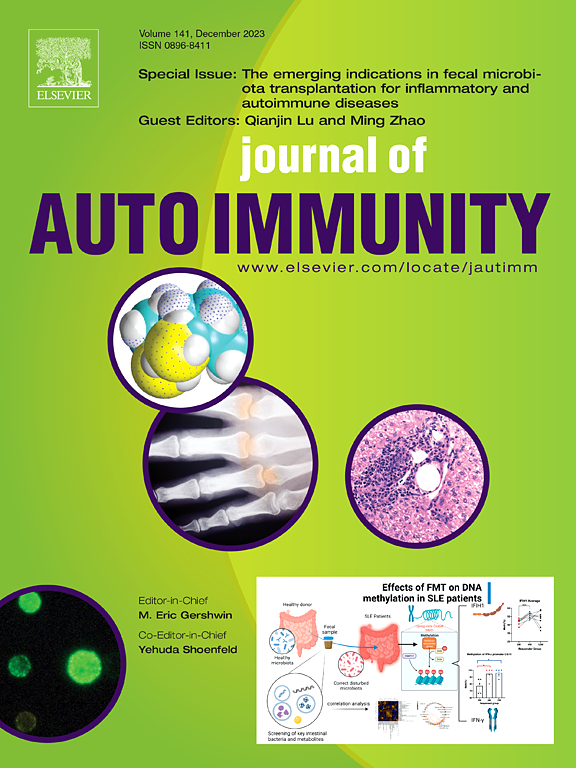铜在类风湿关节炎中的双刃剑作用:机制、治疗和挑战。
IF 7
1区 医学
Q1 IMMUNOLOGY
引用次数: 0
摘要
类风湿性关节炎(RA)是一种病因不明的慢性全身自身免疫性疾病,患者的血液和关节滑液中存在异常的铜稳态。作为人体必需的微量元素,铜在各种生物过程中起着至关重要的作用,包括抗氧化防御、血管生成和骨骼维护。然而,过量铜离子的积累已被证明与RA的疾病活动性和炎症程度呈正相关。虽然铜结合的铜蓝蛋白可能具有抗炎作用,但过量的“游离”铜作为一种强有力的促氧化剂,会导致氧化应激、软骨和骨骼破坏、炎症反应以及肠膜形成。最近发现的依赖铜的细胞死亡途径,称为cuprotosis,进一步增加了其在RA中的作用的复杂性。本文综述了目前关于铜在RA发病机制中的双刃剑作用的研究进展,系统探讨了铜的相关治疗策略,并分析了其潜在的应用前景和面临的挑战。目的是利用铜的生理功能,同时减轻其病理作用,从而为RA的诊断和精确治疗开辟新的途径。本文章由计算机程序翻译,如有差异,请以英文原文为准。
The double-edged sword role of copper in rheumatoid arthritis: Mechanisms, therapeutics, and challenges
Rheumatoid arthritis (RA) is a chronic systemic autoimmune disease with an unclear etiology, in which abnormal copper homeostasis has been shown in the blood and synovial fluid of the joints of patients. As an essential trace element in the human body, copper plays a critical role in various biological processes, including antioxidant defense, angiogenesis, and bone maintenance. However, the accumulation of excessive copper ions has been shown to be positively correlated with disease activity and the degree of inflammation in RA. While copper-bound ceruloplasmin may exert anti-inflammatory effects, excess "free" copper acts as a potent pro-oxidant, driving oxidative stress, cartilage and bone destruction, inflammatory responses, as well as pannus formation. The recently discovered copper-dependent cell death pathway, named cuproptosis, further adds to the complexity of its role in RA. This review integrates current research advances on the double-edged role of copper in the pathogenesis of RA, systematically examines copper-related therapeutic strategies, and finally analyzes their potential applications and challenges. The aim is to harness the physiological functions of copper while mitigating its pathological effects, thereby opening new avenues for the diagnosis and precision treatment of RA.
求助全文
通过发布文献求助,成功后即可免费获取论文全文。
去求助
来源期刊

Journal of autoimmunity
医学-免疫学
CiteScore
27.90
自引率
1.60%
发文量
117
审稿时长
17 days
期刊介绍:
The Journal of Autoimmunity serves as the primary publication for research on various facets of autoimmunity. These include topics such as the mechanism of self-recognition, regulation of autoimmune responses, experimental autoimmune diseases, diagnostic tests for autoantibodies, as well as the epidemiology, pathophysiology, and treatment of autoimmune diseases. While the journal covers a wide range of subjects, it emphasizes papers exploring the genetic, molecular biology, and cellular aspects of the field.
The Journal of Translational Autoimmunity, on the other hand, is a subsidiary journal of the Journal of Autoimmunity. It focuses specifically on translating scientific discoveries in autoimmunity into clinical applications and practical solutions. By highlighting research that bridges the gap between basic science and clinical practice, the Journal of Translational Autoimmunity aims to advance the understanding and treatment of autoimmune diseases.
 求助内容:
求助内容: 应助结果提醒方式:
应助结果提醒方式:


